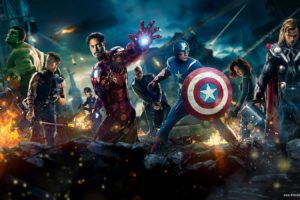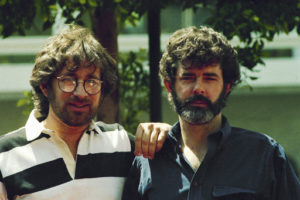Fantastic Failures: The Future of Marvel’s First Family by Connor Bethel
It goes without saying that the recent “Fantastic Four” reboot (or “Fant4stic” as some outlets have referred to it as) was a complete disaster. Critics savaged the film, currently sitting at around 8% on Rotten Tomatoes, and audiences were disinterested as the movie made less than $30 million dollars on its opening weekend. The movie failed to take the number one spot from the newest “Mission Impossible,” and is projected to lose around $60 million-plus for Fox, the studio behind it. As is the case with high profile failures, this has led to numerous discussions, both by the public and those within the industry, about the future of the Fantastic Four in film. Some say the property is unadaptable, while others say that Fox should let the rights slip back to Marvel. Fox is saying that they are committed to bringing these characters to the big screen; regardless, the approach taken to this property has to change.
The Fantastic Four has a rocky history when it comes to adapting the property to the big screen. The first major motion picture made about the group was produced by B-movie legend Roger Corman in the 90s, was made solely to keep the rights, and never saw the inside of a multiplex. The next adaptation was the 2005 Tim Story directed version that stuck closely to the origins written by Stan Lee and Jack Kirby in the 1960s. While the film was mostly successful, it did not strike a cord with moviegoers in the same way that movies like “Spider-Man” and “X-Men” had. A sequel was made, but it was clear that fans of the original comic books, and the rest of the general movie-going audience were not interested in continuing the story. These films are now more remembered as being the first Marvel role for Chris Evans, who would play Captain America for the Marvel Cinematic Universe.
Following the disappointment of “Fantastic Four: Rise of the Silver Surfer,” Fox began developing another version of Marvel’s First Family that would take a drastically direction than the previous movies before it. The reboot was announced in 2009, but no real headway was made until the announcement of Josh Trank as director, hot off the success of his debut film “Chronicle.” Trank decided to take the film in a radically different direction and gained early publicity for his unusual casting choices. The casting of Michael B. Jordan, a black actor, as Johnny Storm, a white character in the comics, created an uneasy backlash against the film, as many people voiced displeasure with the casting, leading to some racist criticism of the film and the actor before a single frame of the film had been seen. The rest of the casting was similarly scrutinized, as the titular foursome was much younger than other versions of the characters, with much of the fan base being of the opinion that several actors had been miscast (not many people would peg Jamie Bell to play rock monster the Thing). Following a troubled production, including alleged studio interference, Trank abusing the cast, crew, and causing over $100,000 worth of damage to the production house, and even showing up on set under the influence of drugs, the film can now only be viewed as a disaster from start to finish.
So where do the Fantastic Four go from here? Spokespeople from 20th Century Fox have said that they are committed to the property and want to expand their own Marvel Universe that includes the much more successful “X-Men” franchise. Whether that means to continue with the plans for a sequel in 2017 or another reboot remains to be seen (Tommy Wiseau of “The Room” fame has said he would be interested in making the sequel). Some have said that the Fantastic Four are unadaptable, given that they were very much a product of the space race and 60’s culture. Others have said that Fox should take notes from Sony and let the rights to the characters to revert back to Marvel, allowing the foursome to join the Marvel Cinematic Universe, even fighting alongside the Avengers against Dr. Doom (who is widely considered to be one of the greatest comic book villains of all time and has never been adapted well to the screen). Given that Fox still has the rights to the characters, it would not be out of the question for Marvel to share the production credit with Fox, much like they are doing with Sony and Spider-Man. Problem is, the relationship between Marvel and Fox is much prickly than the Sony relationship. Marvel does not allow Fox to manufacture toys based on the X-Men or Fantastic Four, Marvel Comics discontinued the Fantastic Four comic series, and one of the rules that is supposedly floating around the Marvel writing room is “no more mutant characters,” which many have interpreted as a way to keep characters out of Fox’s hands. So while a deal between the two studios is not completely out of the question, it is highly unlikely to happen. Which again brings up the question: where do the Fantastic Four go from here?
There may never be a concrete answer to that question, but it doesn’t touch upon the key component that is keeping this property from reaching the heights of other popular comic heroes. What the Fantastic Four needs is their own Christopher Nolan. They don’t need to actually hire Nolan to make a Fantastic Four movie, although that combination would be pretty interesting to see, but they need someone like him to do to the Fantastic Four what he did to Batman: have a unique vision that the studio supports. None of the previous Fantastic Four movies have been made for the right reasons. The Corman produced film as well as the 2015 reboot were both made solely for to keep the rights to characters, while the 2005 movie and its sequel was a rushed attempt to capitalize on the early days of superhero movie craze. If Fox and/or Marvel are really committed to bringing these characters to the big screen, they have to handle it properly. They have to bring in an ambitious director to approach them with an idea and vision about how to bring these characters to life on the big screen, and then they have to let them work. It worked with Christopher Nolan’s “Dark Knight” trilogy, it worked with James Gunn’s “Guardians of the Galaxy,” it worked with Sam Raimi’s “Spider-Man” films (at least the first two), and it probably would have worked with Edgar Wright’s “Ant-Man.” What connects these filmmakers, despite their differing styles and views, is that they appreciated the characters, were willing to take creative risks with them, and were energetic about bringing them to life in ways that few would have thought of. And while a room full of studio executives can create a think tank or writer’s room to come up with something new and exciting, none of that will matter if the studio brings in a director they can bully and boss around. If the Fantastic Four have any future on the big screen, it will come from dedicated directors who have a love for the characters, an infectious sense of energy, and minimal studio interference. Until that happens, Marvel’s First Family may never get the film adaptation they deserve.
Click here to check out our Five-Star rated Short Fiction Collection Vol. 1 on Amazon.com!







Most Commented Posts